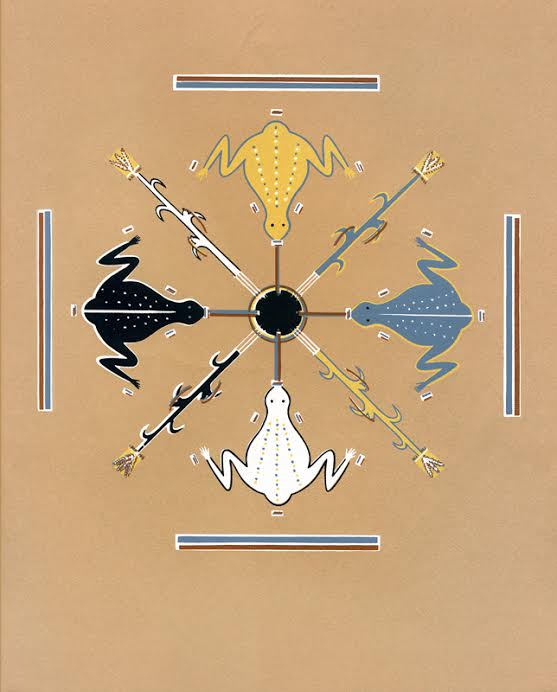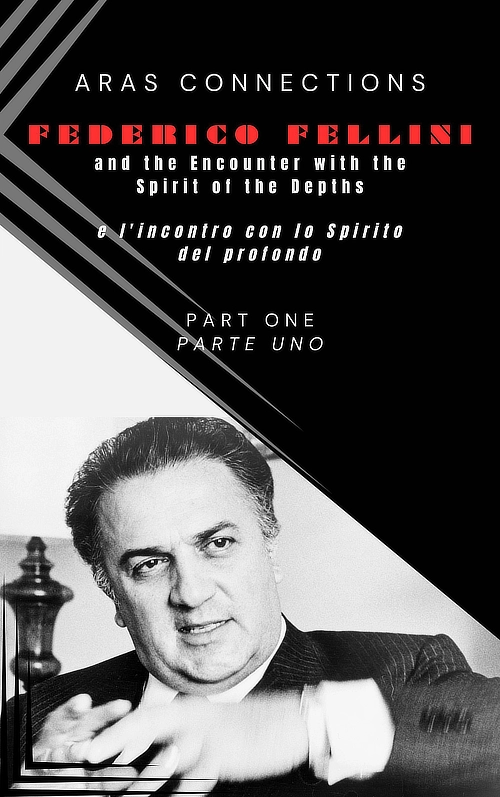ARAS Connections: Image and Archetype - 2025 Issue 1

A cultural and political revolution broke out in many parts of the world between 1965-1975. In the midst of that upheaval, Federico Fellini burst on to the international scene with stunningly original films including Juliet of the Spirits, Satyricon, and Amarcord. Fellini brought a vision to the screen that evoked C. G. Jung’s notion of archetypal reality with a magic that was overbrimming with creativity. Fellini’s films were the very incarnation of what we like to call “numinosum”, a term used to describe a feeling of awe and wonder at something divine or holy that is beyond comprehension. Some sixty or sixty-five years later we find ourselves in a cultural and political revolution that rivals that of the 1960s, but one that is moving in a totally opposite direction towards authoritarianism at home and abroad. If Fellini opened up our world to the vast richness of the inner world, it now feels as if global forces are conspiring to shut that world down and narrow our visions and choices to conspiracy theories and the reality of brute power. We can only hope that a new Fellini will emerge on the imaginative landscape and bring alive once again the richness of the inner and outer world. In the meantime, it seems especially timely that our Italian colleagues have come forth with a series of essays to remind us of the genius of Fellini’s films and reawaken our thirst for his freshness of vision which touches on the timeless. We are especially grateful to Caterina Vezzoli and her collaborators for bringing us these essays at this time of great need for a rebirth of our individual and collective souls. In addition, Allison Tuzo and Jeffrey Moulton Benevedes lent their considerable talents to realizing this two-part ARAS publication of Federico Fellini and The Encounter with the Spirit of the Depths. It also fitting that these essays are being published in both English and Italian to honor the uniquely Italian vision of Fellini that simultaneously has universal relevance and appeal.
Following is a more personal reminiscence of Fellini’s impact on me.
As a young man in my mid-twenties, I fell under Fellini’s spell with his 1965 Juliet of the Spirits. It seemed so richly exotic and foreign while at the same time intimately familiar and immediately known inside for its rare sweetness and sensitivity. It instantaneously rose to the top of my list of all-time movie favorites. Then one day in 1969, I traveled to New York City to visit my Jungian analyst who had managed to pluck me from the depths when I was truly drowning as a young medical student. I don’t remember a thing about that day’s visit to my analyst. What I remember is going to see Satyricon the same day. About that experience I later wrote:
I began to feel a profound split between the inner, Jungian world that I was starting to explore and the outer world of cultural and political turmoil of the late 1960s America that was going haywire with its own numinous and archetypal attractions. This split crystallized dramatically for me in my memory of a day in New York City when I first saw Fellini’s Satyricon and stumbled out of the theater in a transfixed daze only to find myself surrounded by a huge, swirling mob of anti-Vietnam war protestors parading down 5th Avenue. I felt truly divided and equally drawn to two very different worlds, even if later in life I have come to see the events of that day--Satyricon and the anti-Vietnam war parade—as actually being uncanny mirrors of one another. I knew that I belonged both to a rich inner world and a chaotic outer world, but at the time, they seemed to be irreconcilably opposite from one another. Fifty years later, my good friend Jean Kirsch sent me an apt reference to Jung’s 1916 paper, Adaptation, Individuation, Collectivity in which he states “Individuation and collectivity are a pair of opposites, two divergent destinies’“ (Jung 1916/1976,para. 1095 ff.). Perhaps lurching out of the Fellini movie put me face to face with this pair of opposites and potential divergent destinies -- the compelling richness of the inner psychological world and its promise of individuation symbolized by Fellini’s unique vision and the need for committed, social/political engagement with the outer world at a time of great national and world danger. In my own case, I ended up turning far more ‘inward’ to the world of dreams than ‘outward’ to the collective by spending at least the next fifteen years in deep attentiveness to the inner world, with less and less focus on the outer world as I began my psychiatric residency and Jungian analytic training. My intense engagement with the inner world became primary. I moved into Fellini’s world of archetypal images in which the living contents of the collective unconscious seemed to parade inside me on a nightly basis, leaving me to wander around most days trying to decipher their numinous and emotionally charged, coded messages. Certainly, the ‘outer’ world of Vietnam and the eras of Johnson, Nixon, Carter, and Reagan along with other cultural, and psychological movements caught my attention, but somewhat in the fashion of a symbolic march of outer events that were mostly filtered or illuminated by inner contents and developments.
My focus on the inner, symbolic realm became far more important to me than my life in the ‘outer world’. It was no accident that I lived on a houseboat and had a small aquarium where I conducted an experiment in not using an external filter to clean the fish tank, but rather observed the ecosystem develop its own filtration system of growing thick algae, dying off, and cleaning itself with a tiny, solitary eel living at the bottom of the tank – like watching the unconscious process its own material. I had the luxury of being able to cultivate a rich inner life while attending the San Francisco Jung Institute as a candidate and developing a modest psychiatric practice, exploring the psychic processes of myself and my patients. I went way into the unconscious and fully believed it was the most essential reality and the only way to experience the truly counter-cultural notion of that time which placed the highest value on an inner initiatory journey that had its own timing. The Jung who had visions of the map of Europe turning red with blood prior to the outbreak of World War I or the Jung who penned the controversial ‘Wotan’ in 1936 prior to the outbreak of World War II was not the Jung we studied and lived in our training as analysts. The Jung who was deeply tuned into the outer, collective psyche became much less important then than the Jung who saw “individuation” as differentiating out from the shadowy collective. Eventually, I emerged out of that primarily inner journey and would embrace a different attitude that places more equal emphasis on both the inner and outer, the individual and the collective. But, as much as anyone or anything, it was Fellini who gave flesh and blood to the living reality and dynamic creativity of the inner world. For me, Fellini gave flesh and blood and soul to Jung’s vision of the psyche.
-Tom Singer
Federico Fellini and the Encounter with the Spirit of the Depths
Become a Member of ARAS!
Become a member of ARAS Online and you'll receive free, unlimited use of the entire archive of 17,000 images and 20,000 pages of commentary any time you wish—at home, in your office, or wherever you take your computer.
The entire contents of three magnificent ARAS books: An Encyclopedia of Archetypal Symbolism, The Body and The Book of Symbols are included in the archive. These books cost $330 when purchased on their own.
You can join ARAS Online instantly and search the archive immediately. If you have questions, please call (212) 697-3480 or email info@aras.org
We Value Your Ideas
As our newsletter grows to cover both the ARAS archive and the broad world of art and psyche, we're eager to have your suggestions and thoughts on how to improve it. Please send your comments to info@aras.org. We look forward to your input and will reply to every message.
Subscribe
If you're not already a subscriber and would like to receive subsequent issues of this newsletter by email at no cost, e-mail us at newsletter@aras.org.

